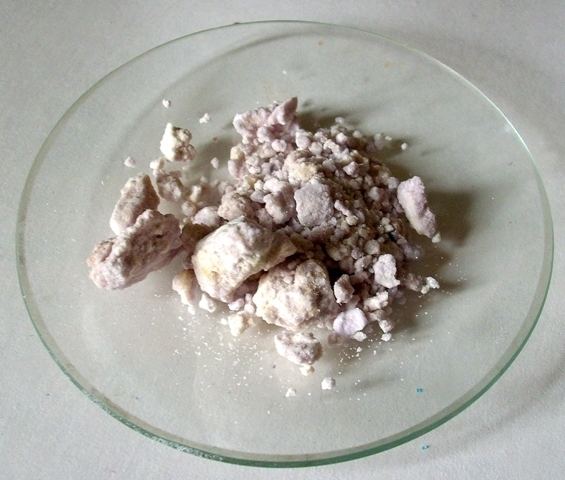Appearance grayish-white crystals Formula Fe2(SO4)3 Molar mass 399.88 g/mol Density 3.1 g/cm³ | Related compounds IUPAC ID Iron(III) sulfate Melting point 480 °C Soluble in Water | |
 | ||
Iron iii sulfate
Iron(III) sulfate (or ferric sulfate), is the chemical compound with the formula Fe2(SO4)3, the sulfate of trivalent iron. Usually yellow, it is a rhombic crystalline salt and soluble in water at room temperature. It is used in dyeing as a mordant, and as a coagulant for industrial wastes. It is also used in pigments, and in pickling baths for aluminum and steel. Medically it is used as an astringent and styptic.
Contents
Natural occurrences
Mikasaite, a mixed iron-aluminium sulfate of chemical formula (Fe3+, Al3+)2(SO4)3 is the name of mineralogical form of iron(III) sulfate. This anhydrous form occurs very rarely and is connected with coal fires. The hydrates are more common, with coquimbite (nonahydrate) as probably the most often met among them. Paracoquimbite is the other, rarely met natural nonahydrate. Kornelite (heptahydrate) and quenstedtite (decahydrate) are rarely found. Lausenite (hexa- or pentahydrate) is a doubtful species. All the mentioned natural hydrates are unstable compounds connected with Fe-bearing primary minerals (mainly pyrite and marcasite) oxidation in ore beds. In the solutions of the ore beds oxidation zones the iron(III) sulfate is also an important oxidative agent.
Production
Iron(III) sulfate is produced on a large scale by reacting sulfuric acid, a hot solution of ferrous sulfate, and an oxidizing agent (such as nitric acid or hydrogen peroxide).
2 FeSO4 + H2SO4 + H2O2 → Fe2(SO4)3 + 2 H2OMars exploration
Ferric sulfate and jarosite have been detected by the two martian rovers Spirit and Opportunity. These substances are indicative of strongly oxidizing conditions prevailing at the surface of Mars. In May 2009, the Spirit rover became stuck when it drove over a patch of soft ferric sulfate that had been hidden under a veneer of normal-looking soil. Because iron sulfate has very little cohesion, the rover's wheels could not gain sufficient traction to pull the body of the rover out of the iron sulfate patch. Multiple techniques were attempted to extricate the rover, but the wheels eventually sunk so deeply into the iron sulfate that the body of the rover came to rest on the martian surface, preventing the wheels from exerting any force on the material below them. As the JPL team failed to recover the mobility of Spirit, it signified the end of the journey for the rover.
